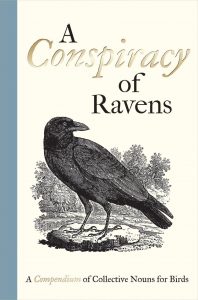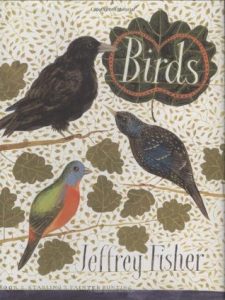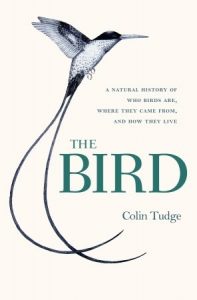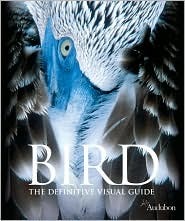 I’m starting a new series! About feathered folks! And not of the tarred & feathered variety, either!* To start off, we’re going to be exploring a bit the collective nouns we use for birds, which range from charming and witty to downright confusing.
I’m starting a new series! About feathered folks! And not of the tarred & feathered variety, either!* To start off, we’re going to be exploring a bit the collective nouns we use for birds, which range from charming and witty to downright confusing.
Do ravens come in unkindnesses or conspiracies? And why are we so biased against the nature of ravens, such that the sight of a group of them inspires either conspiracy or unkindness, or both? While this book won’t answer either of those questions – Fanous never addresses an unkindness of ravens, for example – it’s not quite the point of this delightful volume. I get the feeling that differences in collective nouns for different birds might be due in part to the fact that these collective nouns are not standardized, and are thus subject to the natural ebb and flow of the English language. Of course, there are the ones that enjoy pretty widespread use, such as a murmuration of starlings, or a murder of crows. Then there are the ones you might not have heard of before, that I’m pretty sure aren’t quite as ubiquitous: a conspiracy of ravens, for one (v.s. an unkindness), or a dropping of pigeons (I get the feeling someone got pigeon droppings on them after a group of pigeons flew overhead and coined this collective noun). Some are absolutely charming – a museum of waxwings is one such example, along with an invisibility of ptarmigans – while others incomprehensible – like how a group of herons is called a posse, but a flock of egrets is called a heronry. And then there’s the flock of bustards, which I can’t help but think got the short end of the stick, because they’re just entered into this compendium as a flock.
Another possibility is that – I’m wondering whether it’s because this compendium was published in the UK – perhaps there are geographical differences in collective nouns? To be honest, at this point, I’m getting the feeling there’s just more than one way to refer to a single-species mass of birds, for a number of species, and that maybe ravens are simply one of those that enjoy more than one (though I don’t know if they enjoy their reputation… it’s a bit less sinister than that for crows, I suppose, which have out and committed the murder already). Either way, you’ll be absolutely charmed by goldfinches, set a-trembling by finches, (apparently) inspired to conspire to unkindness by ravens, and probably left out of the heron posse (sadly). And I’ll be left wishing upon a star(ling) for someone to make this into a series of books of collective nouns, because I would be beyond ecstatic.
I haven’t talked about the illustrations yet, and I’d like to, but this is getting a bit long in the way of introduction to a series about birds, and I think taking the cover as the standard for the bird illustrations throughout will make for a fair evaluation. To keep it short: I’d love a poster of all these illustrations & accompanying text in my room, despite the fact that I don’t even put posters up in my room. I feel I might make an exception for this.
And now that those ravens have succeeded in their conspiracy to inspire you to read more about birds**, I’m going to provide a couple suggestions for general avian reading under the cut! Lily has also written a lovely post about Mozart’s Starling by Lyanda Lynn Haupt, where she has also listed a few avian recommendations, so go check out that post as well!
*There’s a thought for a future series! A tentative series title is “Tarred & Feathered, Sometimes Quartered“; I’ll leave the contents to your imagination. I would try my best to make it happen if there’s enough interest – truly.
**Who said conspiracies have to be a bad thing?
Below are a few other general reading recommendations about our feathered friends.
 This illustrated volume of Birds by Jeffrey & Christine Fisher is another beautifully illustrated little tome! It has simple but adorable endpapers, and I feel as though it’s always a sign of a well thought-out book when there are interesting endpapers. It’s proof (no pun intended) that someone’s paying attention to the details. Again, I was drawn in by the cover but proven correct in my choice to judge a book by its cover: this slim volume introduces you to a bird a page (or a double-page spread, I suppose), accompanied by a short description on the other side. These brief descriptions vary from one-liners about the featured bird’s physical characteristics to interesting facts, and I learned that a gathering of rooks is called a parliament for a reason: apparently, they sometimes form together a circle around one or a few rooks in the center, appear to deliberate for a bit before either passing judgment on those in the center by pecking them to death or pardoning them. That’s actually fascinating. I wonder why they do it?
This illustrated volume of Birds by Jeffrey & Christine Fisher is another beautifully illustrated little tome! It has simple but adorable endpapers, and I feel as though it’s always a sign of a well thought-out book when there are interesting endpapers. It’s proof (no pun intended) that someone’s paying attention to the details. Again, I was drawn in by the cover but proven correct in my choice to judge a book by its cover: this slim volume introduces you to a bird a page (or a double-page spread, I suppose), accompanied by a short description on the other side. These brief descriptions vary from one-liners about the featured bird’s physical characteristics to interesting facts, and I learned that a gathering of rooks is called a parliament for a reason: apparently, they sometimes form together a circle around one or a few rooks in the center, appear to deliberate for a bit before either passing judgment on those in the center by pecking them to death or pardoning them. That’s actually fascinating. I wonder why they do it?
Because Birds is more a collection of birds, you might be interested in following it up with either the following books, or The Bedside Book of Birds: An Avian Miscellany by Graeme Gibson, who details human relationships with birds throughout history.
 Then there’s The Bird: A Natural History of Who Birds Are, Where They Come From and How They Live by Colin Tudge, who also happens to be the author of The Link: Uncovering Our Earliest Ancestor, as well as The Tree: A Natural History of What Trees Are, How They Live, and Why They Matter (we don’t own this one, but we do have lots of books about trees, as I’ve talked about before). Now onto The Bird.
Then there’s The Bird: A Natural History of Who Birds Are, Where They Come From and How They Live by Colin Tudge, who also happens to be the author of The Link: Uncovering Our Earliest Ancestor, as well as The Tree: A Natural History of What Trees Are, How They Live, and Why They Matter (we don’t own this one, but we do have lots of books about trees, as I’ve talked about before). Now onto The Bird.
Tudge covers quite a bit of ground from where birds came from – is it dinosaurs? are they dinosaurs? – and how they have survived and continue to live into the present day, presenting the reader with a variety of different birds in his examples. He also covers the different orders of birds and gives a brief description of the species that fall within them, including some that have gone extinct. Tudge is incredibly thorough, and The Bird covers a lot of ground, explaining the wonders that are birds at each step, and you’ll be sure to want to pick up another bird book to follow up on specific topics, such as Bird Sense, which I will be talking about in more detail later, or perhaps Feathers, to read up on the natural marvel that are feathers. I thoroughly enjoyed Tudge’s dry humour, which made all the information in this volume that much easier to absorb – and it’s quite a bit at times, especially as he goes through various examples of different birds that illustrate some concept or other. The Bird is a sincere and dedicated celebration of birds as they were, as they are, and as they ought to be celebrated and appreciated.
 Bird: The Definitive Guide shouldn’t be missed, either! It’s filled with information about birds all over the world, with descriptions of their physical characteristics accompanied by photos of the birds, their migration patterns if application, and whereabouts you’ll be able to find them (e.g. rain forest, mangroves) within a little map accompanying that information that illustrates where in the world to find them. The book itself is split up into 3 parts: the introduction, a discussion of different habitats, and then the birds, which are then split up into their different orders, from what I could tell. Or at least, there were, broadly, passerines and non-passerines, that were then further narrowed down. And if in doubt, or if you’re looking for a particular bird, just check the index at the end to find your bird. There’s also a glossary at the back, before the index, where you can go to double-check what certain terms mean, or how they are used within the context of this guide. I think part of the charm of this visual guide is that even if you’re not a birdwatcher, you can experience the joy of seeing all these different birds anyway, all in one sitting!
Bird: The Definitive Guide shouldn’t be missed, either! It’s filled with information about birds all over the world, with descriptions of their physical characteristics accompanied by photos of the birds, their migration patterns if application, and whereabouts you’ll be able to find them (e.g. rain forest, mangroves) within a little map accompanying that information that illustrates where in the world to find them. The book itself is split up into 3 parts: the introduction, a discussion of different habitats, and then the birds, which are then split up into their different orders, from what I could tell. Or at least, there were, broadly, passerines and non-passerines, that were then further narrowed down. And if in doubt, or if you’re looking for a particular bird, just check the index at the end to find your bird. There’s also a glossary at the back, before the index, where you can go to double-check what certain terms mean, or how they are used within the context of this guide. I think part of the charm of this visual guide is that even if you’re not a birdwatcher, you can experience the joy of seeing all these different birds anyway, all in one sitting!
And seeing as it’s the definitive (visual) guide, I don’t think I need to say much more about it.
Below are what I have planned coming up for the Avian Matters series, so look forward to it!
- Bird Sense
- Why Did the Chicken Cross the World?
- Corvidae
- Birdwatching